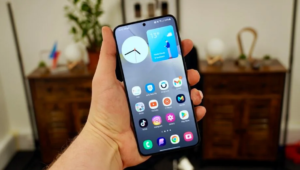8GB of RAM is becoming history! AI phones are accelerating the popularity of large memory

The emergence of AI big models has brought the mobile phone industry into a new era, and AI mobile phones have become a hot topic of public concern.
Therefore, in the eyes of many people, 2024 is the first year of AI mobile phones, and the market competition is bound to become more and more fierce. At the same time, AI mobile phones will also accelerate the improvement of mobile phone hardware, and large memory may be the first barrier to be broken.
8GB of RAM is becoming history
Mobile phone memory refers to the running memory of the mobile phone, which is the “8GB” in “8GB+256GB” when we buy mobile phones. It is the inevitable guarantee for the smooth operation of various software apps on a mobile phone. With the popularization of technology and the enrichment of software functions, large memory has become the standard choice for mobile phones, and 8GB has gradually disappeared in the mid-to-high-end market.
Why do we need large memory? This may be a question for many users. It is undeniable that the configuration of smartphones nowadays is sufficient to meet the needs of users for about four years of smooth use, which leads to the continuous extension of the replacement cycle, making it impossible for large memory to be popularized to every user and forming a differentiated perceptual experience.
On the other hand, the functions of mobile phone software APPs are constantly enriched, and while occupying more storage space, it also increases the difficulty of system calls, which inevitably leads to freezes or inability to keep the background active. Mobile phones with larger memory will be more handy when calling these software, and the fluency and liveness will be guaranteed.
It can be seen that many mobile phones on the market now start with 12GB, and 8GB memory versions are almost unavailable, or even completely disappeared in the mid-to-high-end market. This means that large memory has become the mainstream demand of the market, and the 8GB that was popular two or three years ago has gradually become history.
More importantly, 12GB is only the starting price, and 16GB and 24GB are gradually occupying the mainstream mobile phone market. For consumers, 16GB may be the mainstream choice for most people to buy mobile phones now, and it is also the most suitable choice, but due to the longer replacement cycle, large memory is still difficult to really popularize.
However, the emergence of large AI models, or AI mobile phones, has made large-memory mobile phones more possible, and may accelerate the popularization of large memory.

AI mobile phones accelerate the popularization of large memory
AI big models and AI mobile phones are hot topics in the current mobile phone industry and have attracted much attention from consumers. When users want to experience AI functions, the hardware of the mobile phone itself naturally needs to meet certain requirements, which is equivalent to setting a threshold. Among them, large memory is an important hurdle.
First of all, we need to make it clear that the AI big model concept promoted by mobile phone manufacturers today is the end-side AI big model, not the cloud-based AI big model. Compared with the latter, the former mainly relies on the chip computing power inside the mobile phone to generate results, and does not need to be uploaded to the cloud via the Internet, which not only reduces cloud costs, but also reduces the risk of privacy data leakage.
However, the disadvantage of the large-scale AI model on the edge is also obvious, that is, it is too dependent on hardware. Just imagine, how can the small chip on a mobile phone compare with hundreds or thousands of top-level graphics cards on a cloud server?
In other words, over-reliance on hardware means that better hardware is needed to support the operation of mobile phone AI big models, so as to realize more AI functions. Therefore, strictly speaking, there is no real end-side AI big model yet, and it is still in a state of combining the two.

Previously, there was news that Google hid its large AI model, the Gemini Nano model, in the Pixel 8 developer options, precisely because of the 8GB memory considerations.
Google believes that AI models will take up memory, and the Pixel 8, which has only 8GB of memory, may have a bad experience if it is forced to use Gemini Nano. The Pixel 8 Pro’s 12GB of memory can run AI models better.
In addition, Apple’s research team has also published a paper on large models. They believe that they can try to use flash memory technology to reduce the difficulty of data loading and optimize the size of data blocks to achieve efficient management of loaded data. This method is a new solution, but it has not been implemented yet.
All these phenomena indicate that large edge AI models have high requirements for mobile phone memory. The current 12GB may soon be eliminated, and 16GB or 24GB will gradually become the mainstream.
From this point of view, the emergence of AI mobile phones has indeed accelerated the popularization of large memory. Therefore, if users want to experience more interesting AI functions, it is necessary to upgrade to large memory.
In today’s mobile phone market, large memory is a trend in itself, but the emergence of large-scale AI models on the edge has accelerated this trend. This is a new test for both consumers and mobile phone manufacturers.
If mobile phone manufacturers can implement large models on the edge and develop more AI functions, they can bring more innovative experiences to users.
Well, I think maybe many consumers are willing to pay for it, and this is the most critical priority. I hope that in the near future, we can really see the arrival of the AI mobile phone era, making mobile phones more intelligent.


Kazam is Focused on creating and reporting timely content in technology with a special focus on mobile phone technology. Kazam reports, analyzes, and reviews recent trends, news and rumors in mobile phone technology and provides the best possible insights to enhance your experience and knowledge.








